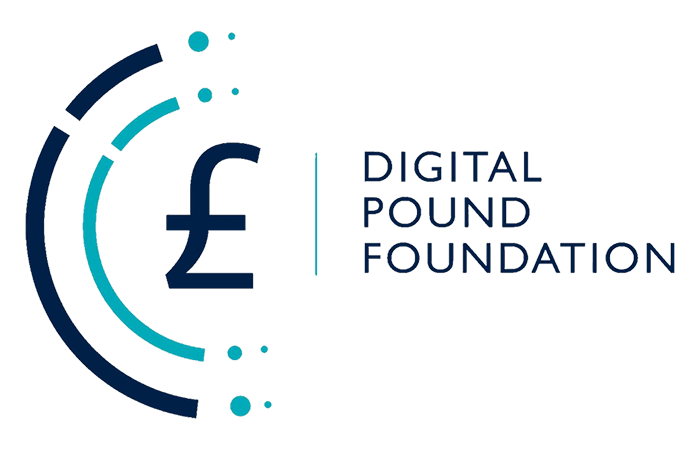Written by Jannah Patchay, Policy Lead for the Digital Pound Foundation
Central bank digital currencies (CBDCs) – a digital form of central bank-issued fiat currency – have seen explosive growth in interest over the past four years. At the start of 2023, 114 countries, representing 95% of global GDP, are currently exploring CBDC, of which 60 are in an advanced stage of development, pilot or launch, with 11 having fully launched a CBDC. This does not include China’s pilot, which currently reaches 260 million users and is expected to expand to most of the country in 2023.
Policy drivers and motivations
Each of these jurisdictions has its own unique blend of policy drivers and motivations for introducing a CBDC. For the Bahamian Sand Dollar – the world’s first fully live CBDC, launched in October 2020 – introduction of a CBDC addressed the very obvious logistical issues involved in distributing cash to ATMs across nearly 700 islands, particularly during a pandemic, and modernising the country’s financial infrastructure. For Nigeria’s e-Naira, financial inclusion is a key driver, with the potential to improve remittances, offer access to the unbanked, and enable more effective government welfare distribution. In Sweden, which has experienced perhaps the sharpest decline in cash usage, the e-Krona project represents the country’s commitment to providing the public with continued access to public (central bank-issued) money, in a digital-native format and as a replacement for cash.
For others, the opportunities presented by CBDC are more overtly geopolitical in nature. Cambodia’s Bakong payments system (a so-called synthetic CBDC, which is issued privately but backed by reserves held at the central bank), also launched in October 2020, had an explicit objective of strengthening the local currency, the Khmer riel, and correspondingly reducing dependence on the US dollar in a highly dollarised economy – in other words, regaining a greater degree of monetary sovereignty. The European Union sees the introduction of a digital Euro as a means not only of strengthening the monetary sovereignty of the Eurozone and fostering competition and efficiency in the European payment sector, but also of greater EU integration and strengthening the EU’s strategic autonomy and economic efficiency. For the United States, the most significant drivers of CBDC exploration are not modernisation of payments infrastructure, but rather the need to retain its influence on the world, both politically and economically.
Geopolitical motivations for a CBDC
At present, the US dollar is either used directly for settlement or indirectly as an intermediary currency for settlement of 88% of all FX transactions globally. Along with the degree of dollarisation (partial or full) inherent in a number of jurisdictions, and the use by most central banks of the US dollar as a reserve currency, this reliance on the US dollar enables the US to exercise a significant degree of extraterritorial economic and political power in terms of sanctions enforcement and influence. Recent events in Ukraine, and the West’s response in cutting Russia off from the financial system, have further spurred interest from many jurisdictions in exploring CBDCs for cross-border payments as a means of insulating themselves from similar situations. This in turn has incentivised the US to pick up the pace on its own CBDC explorations, particularly when it comes to wholesale CBDC which can be used for cross-border settlement.
There is certainly an advantage to being a first mover, or an early adopter, with respect to CBDC. A jurisdiction that has implemented a well-designed CBDC with design features that appeal to a broad user base, and relatively open access to users outside its own borders, may find its currency in greater demand. Some jurisdictions may start to mandate payments to and from service providers in their own CBDC. If, for example, China were to do this with respect to its “Belt and Road” initiative, the consequences for uptake of its DCEP CBDC and payments system – outside its own borders – would be significant, and could have knock-on effects in local economies, effectively leading to a reserve currency status in certain parts of the world. A CBDC, therefore, can have geopolitical impacts, and impacts on the monetary sovereignty of nations.
Initially, at least, CBDCs represented a reaction from central banks to proposed new forms of privately-issued digital money, most notably Meta’s (formerly Facebook’s) Diem (formerly Libra). Even as the case for CBDCs has further broadened, privately-issued stablecoins continue to pose a potential challenge for the monetary sovereignty of some central banks. A US dollar-denominated stablecoin that is made available to consumers and businesses beyond the US could quickly begin to supplant the use of the local currency, particularly in times of currency volatility or political uncertainty (a situation which can arise even in developed economies such as the UK, as the events of 2022 have shown). For the impacted central bank, this could in turn lead to a creeping dollarisation effect and corresponding loss of monetary sovereignty domestically alongside loss of confidence on the world stage – a wholly undesirable situation, by any standard.
From an international perspective, it is becoming increasingly apparent that CBDC is a necessity for any nation-state wishing to preserve its sovereignty in determining fiscal and monetary policy in a world that will be increasingly fuelled by both privately operated, decentralised digital currencies and other types of digital assets. The exercise of sovereign power by a nation is closely linked to its ability to leverage and exert influence through its currency and how that currency is perceived and used at both domestic and international levels.
A competitive platform for innovation
There has also been a growing recognition of the wider benefits associated with CBDCs beyond their use as payments instruments. This includes opportunities for innovation and competition arising from programmable, digital-native central bank-issued money. Nevertheless, the adoption of any CBDC is heavily dependent not only on its technical features but also on the way in which characteristics such as privacy, resilience, security, and consumer protection are built into its design and that of its accompanying infrastructure.
One of the most exciting features of CBDC is the potential for introducing programmable money – a form of digital money that, by design, allows for the execution of certain software code in the course of a transaction using that money. Programmable money can offer users – be they individuals, businesses, local authorities, or government departments – a means of transacting in which all the consequences and obligations arising as a result of their transaction are managed seamlessly. The potential to programme rules and restrictions into a CBDC also opens up the potential for enforcing economic sanctions, or for cutting outflows of currency to certain jurisdictions based on policy decisions.
Introduction of a CBDC can drive greater adoption and innovation of transformative technology paradigms such as artificial intelligence (AI), decentralised systems and applications implemented via distributed ledger technology, and the internet of things (IoT). Combining the power of AI and DLT can give rise to a diverse set of new business models and applications associated with internet-enabled, networked hardware devices that can act as digital agents for their owners.
The geopolitical case for a digital Pound
The UK, at present, has a world-leading financial services industry, in terms of both incumbents and new entrants/challengers, as well as Fintechs. Its regulatory environment is extremely conducive to innovation, and its common law system and ability to adapt to change at pace are the envy of many jurisdictions. However, the UK has unfortunately fallen behind many of its global trading partners and competitors when it comes to the transformational capabilities of new technologies, including CBDC, that are increasingly influencing the balance of power in trade and finance.
The UK faces a period of great change and new challenges in light of the combined impact of Brexit, the aftermath of the global Covid-19 pandemic, and the ongoing conflict in Ukraine. A nation’s currency is not only its store of value, unit of account, and medium of exchange; when deployed strategically, it has the potential to create new economic opportunities. A well-designed digital Pound has the potential to breathe new life into the UK’s currency on the global stage, and the introduction of a sovereign currency that is able to participate fully and actively in digital ecosystems will enable the UK to further build on its economic and social development and growth. In designing its own CBDC, the UK has an opportunity to play to its strengths – and its desired strategic objectives in a post-Brexit landscape – and to develop a CBDC that can contribute not only to maintaining a position of global leadership, but also to lead in the way in standard setting, effective regulation, sustainability and delivery of ESG objectives, for the world of the future.
The introduction of a digital Pound in the form of a UK CBDC will have impacts and repercussions far beyond payments infrastructure. It will provide a platform for innovation that can support the UK’s transition to a digital economy. It is a fundamental infrastructure that can underpin the delivery of numerous policy objectives ranging from the Net Zero Target to more efficient fiscal policy, and it will ultimately enable the UK to maintain a leading edge in an increasingly competitive global financial markets and fintech landscape.




























































